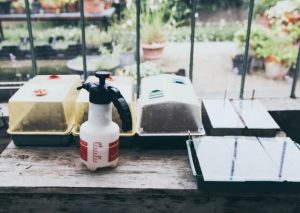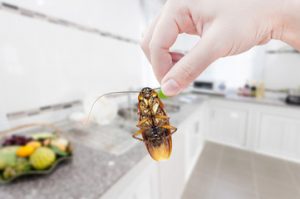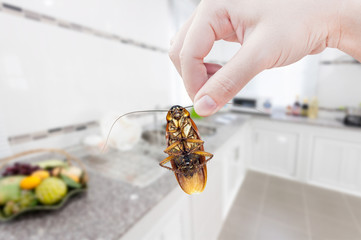Pesticides are an excellent way to rid your home of infestations. But most of the time, there is also a risk of harmful effects. The detrimental impact happens because of the smell of chemicals, as well as when it touches the skin. This article gives you different home insecticide alternatives that are safe and easy to do.
7 Alternative Home Remedies for Pest Prevention

1. Oil-based Insecticide
Oil is a widespread pest repellent because of its effects, primarily on soft-bodied pests such as aphids, thrips, and mites. This type of liquid kills insects by suffocation. Insects have spiracles through which they breathe, and oil blocks these breathing vessels. The oil blockage ultimately ceases all metabolic functions and oxygen supply.
The following are the steps to make your oil-based insecticide:
- Get a bottle and pour one cup of vegetable oil.
- Put in one tablespoon of mild soap.
- Shake thoroughly.
Take note that this is the concentrate and main pesticide mixture. You still have to combine it with a few more liquids to dilute it. Here are the steps to weaken the mix:
- Get a spray bottle and put one quart of water.
- Get two teaspoons of the pesticide concentrate and add it onto the spray bottle with water.
- Shake thoroughly.
- Spray onto the surfaces you wish to get rid of pests.
2. Soap-based Insecticide
Soap dries out insects, which is why a lot of homeowners often use mixtures involving soap in killing pests. The mechanism is that there is cell collapse and deterioration once sprayed onto the surface of the pests. Soap works on scale insects, chiggers, earwigs and scales, as well as soft-bodied pests. However, this mixture does not take effect on caterpillars or beetles.
The following are the steps to make your soap-based insecticide:
- Get a bottle and put one and a half teaspoons of mild soap.
- Add one quart of water.
- Shake thoroughly.
- Spray onto surfaces you wish to get rid of pests.
If you wish you wish to use this mixture on plants, make sure to remember that it may cause potential damage, mainly if applied during the hot times of the day. Instead, choose to spray in the early morning or the evenings.
3. Diatomite Insecticide And Pesticide
Diatomite, also known as diatomaceous earth, comes from an ocean or river or lake plant’s single-shelled cell called a diatom. When these plants die, the shells remain on the body of water’s floor. When dried, this is the only time it is active, and the microscopic spikes destroy and break the waxy shell of bugs. This pesticide is most effective against cockroaches, ants, fleas, ticks, centipedes, and scorpions.
The following are the steps on how to effectively use Diatomite Insecticide:
- Scatter the powder/particles on the area infested.
- Reapply if needed, especially after rain.
Take note that this insecticide also works on snails and slugs.
4. Garlic Insecticide
Garlic has a naturally pungent smell that can be attractive for some, but repellent for the majority. Studies have shown that garlic is an effective insecticide and repellent in all forms possible: liquid, oil, gas. Use this mixture wisely and make sure to make an odor strong enough to repel any pest lingering at your home. This mixture is also safe to use for plantations.
The following are the steps to make your garlic insecticide:
- Buy two whole bulbs of garlic from the grocery.
- Blend the cloves in minimal water until they become a puree.
- Set aside overnight.
- Use a strainer and strain in a bottle or jar.
- Add half a cup of vegetable oil for additional insecticide purposes, but this is optional.
- Add one teaspoon of mild liquid soap. Again, soap has insecticidal properties.
- Continue to fill the bottle or jar with water.
Take note that this is the concentrate and main pesticide mixture. You still have to combine it with a few more liquids to dilute it. Here are the steps to weaken the mix:
- Obtain a jar and fill with one cup of the concentrate or mixture.
- Add one quart of water.
- Shake thoroughly and spray of infested areas.
5. Chili Mix Insecticide
Just like garlic, chili is an excellent repellent because of its strong odor. A lot of insects dislike intense aromas and scents, as well as the taste. When making a mixture, make sure always to wear gloves. Chilis have a component called capsaicin that can potentially harm your skin and cause unwanted redness and irritation. Avoid eye, nose, and mouth contact at all times. You can save yourself some time by hiring a pest control company like terminix wichita to remove pests from your home.
The following are the steps to make your chili mix insecticide:
If made from chili powder:
- Get chili powder and put one tablespoon in a jar or bottle.
- Add one quart of water.
- Add a few drops of mild soap.
- Shake thoroughly. You may use this directly, even on plants affected by the infestation.
If made from fresh chili peppers:
- Get half a cup of chili peppers and add water.
- Blend until it is a puree.
- Transfer the puree into a pot and add one quart of water.
- Boil for a few minutes.
- Let it cool.
- Strain the mixture into a jar or bottle.
- Add mild soap.
- Shake thoroughly and spray directly on infested areas.
6. Tomato Leaf Insecticide
Tomato leaf is new in the world of natural pest control. Tomatine is an alkaloid in tomatoes that is released when a plant is damaged or attacked. Although a lot of research is still needed, tomato leaf shows promising results against aphids, whiteflies, etc.
The following are the steps to make your tomato leaf insecticide:
- Get tomato leaves from the bottom of the tomato plant.
- Chop the leaves.
- Put one quart of water in a jar or bottle and put the chopped leaves inside.
- Let the mixture sit overnight.
- Shake thoroughly and spray onto infected areas and plants if necessary.
7. Garlic-Chili-Onion All In Insecticide
Using only one ingredient already proves effectiveness, which is why a combination is potentially a good idea to combine the great results you’ll get. An all in one insecticide spray gives you multiple effectiveness.
The following are the steps to make your own all in insecticide:
- Obtain one clove of garlic and onion, as well as chili powder.
- Puree the clove of onion and garlic in a blender.
- Add one teaspoon of chili powder.
- Let the mixture sit for one hour.
- Strain the mixture.
- Add one tablespoon of liquid soap.
- Mix thoroughly and transfer to a spray bottle.

You may use this mixture on plants and surfaces. You may also store it in the refrigerator for up to a week. Visit Pestwiki for more pet prevention tips. Whether you’re using home remedies or commercial products for pest prevention, one thing you should never miss is wearing proper protective equipment such as a face mask, chemical-resistant nitrile gloves, long pants, and closed-toe shoes. It’s always best to wear protective gear in case you accidentally spray yourself with the product or the pest suddenly slithers toward you. It’s better to be safe than sorry.
ALSO READ:
- How To Easily Treat A Burn Blister That Has Popped
- Infographic: Natural Ways To Increase Breast Size
- 5 Potent Natural Remedies For Gum Diseases
- Top 5 Home Remedies for Treating Yellow Jacket Sting.








